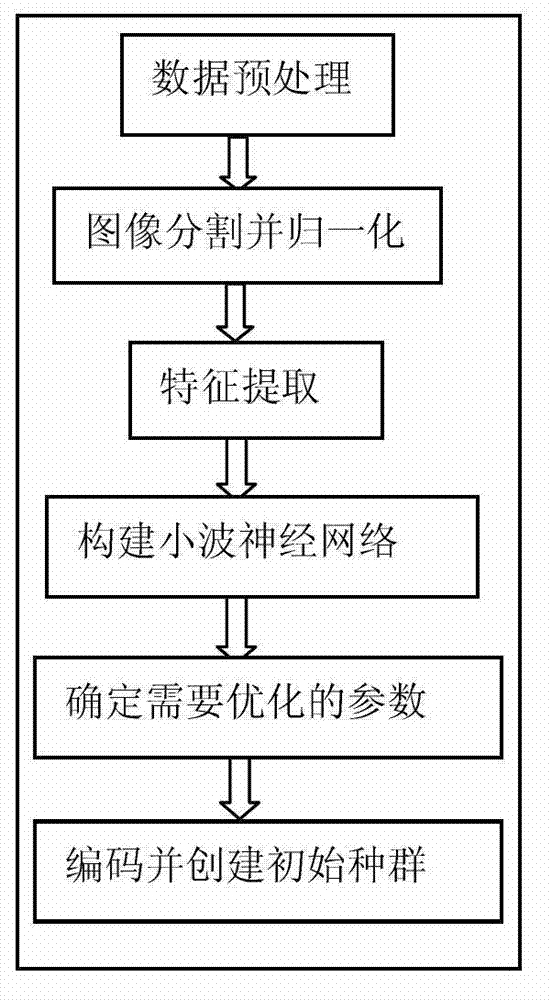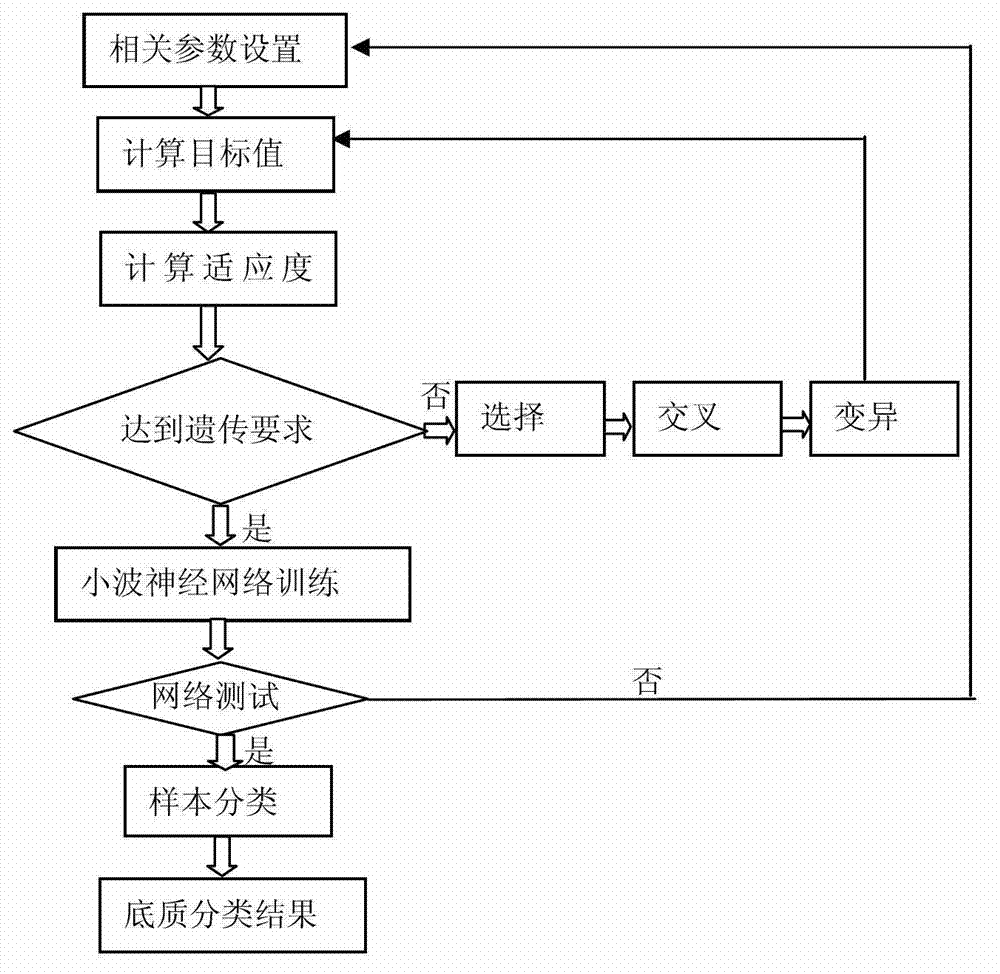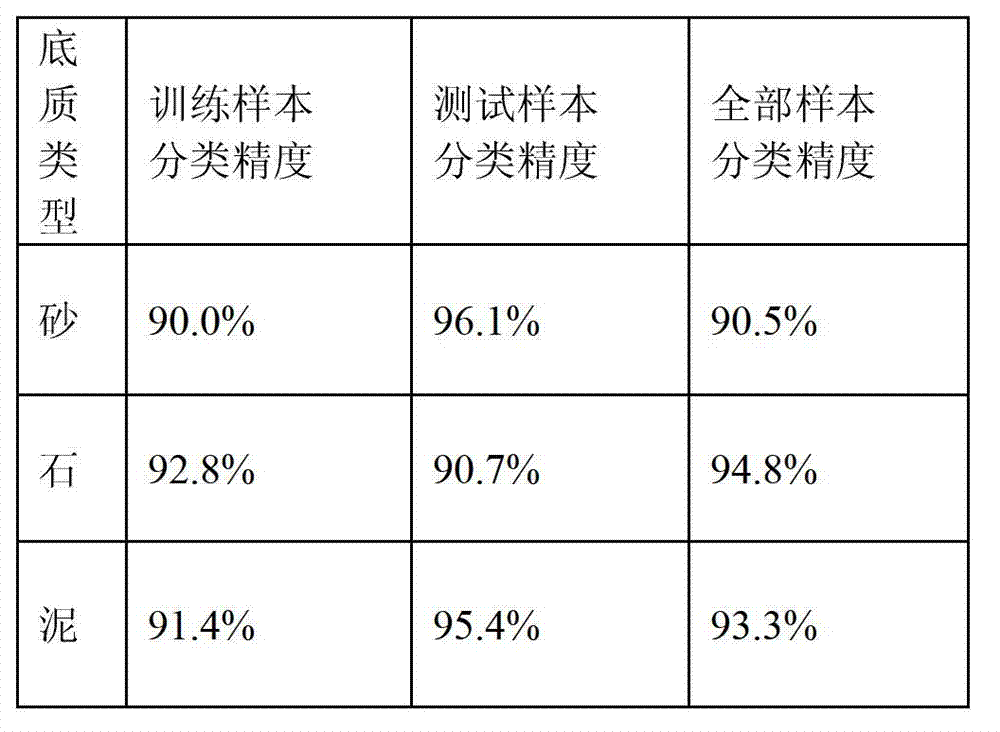Method for converting seabed sonar image into acoustic substrate classification based on wavelet neutral network
A technology of wavelet neural network and image conversion, applied in neural learning methods, biological neural network models, character and pattern recognition, etc., can solve problems such as time-consuming and difficult to determine initial weights, and avoid noise and local extremum, Avoid getting stuck in locally smaller effects
- Summary
- Abstract
- Description
- Claims
- Application Information
AI Technical Summary
Problems solved by technology
Method used
Image
Examples
Embodiment 1
[0032] like figure 1 , figure 2 As shown, the wavelet neural network-based seabed sonar image described in this embodiment is converted into an acoustic bottom class method, including the following steps:
[0033] a) Read the corrected sonar image, convert it into a grayscale image, and then normalize the image, and return the grayscale value of the grayscale image to the range of 0 to 1; matrix the image, Convert the gray value of the image to a value that can be directly calculated by arithmetic, then segment the image, divide the sonar image into several unit images and save them;
[0034] b) Calculate and save the eigenvalues of the unit images based on the obtained unit images. The eigenvalues include co-occurrence matrix energy, co-occurrence matrix variance, co-occurrence matrix local uniformity (homogeneity), co-occurrence matrix correlation coefficient, co-occurrence matrix contrast, and histogram Mean (first moment), histogram standard deviation, histogram sm...
PUM
 Login to View More
Login to View More Abstract
Description
Claims
Application Information
 Login to View More
Login to View More - R&D
- Intellectual Property
- Life Sciences
- Materials
- Tech Scout
- Unparalleled Data Quality
- Higher Quality Content
- 60% Fewer Hallucinations
Browse by: Latest US Patents, China's latest patents, Technical Efficacy Thesaurus, Application Domain, Technology Topic, Popular Technical Reports.
© 2025 PatSnap. All rights reserved.Legal|Privacy policy|Modern Slavery Act Transparency Statement|Sitemap|About US| Contact US: help@patsnap.com



